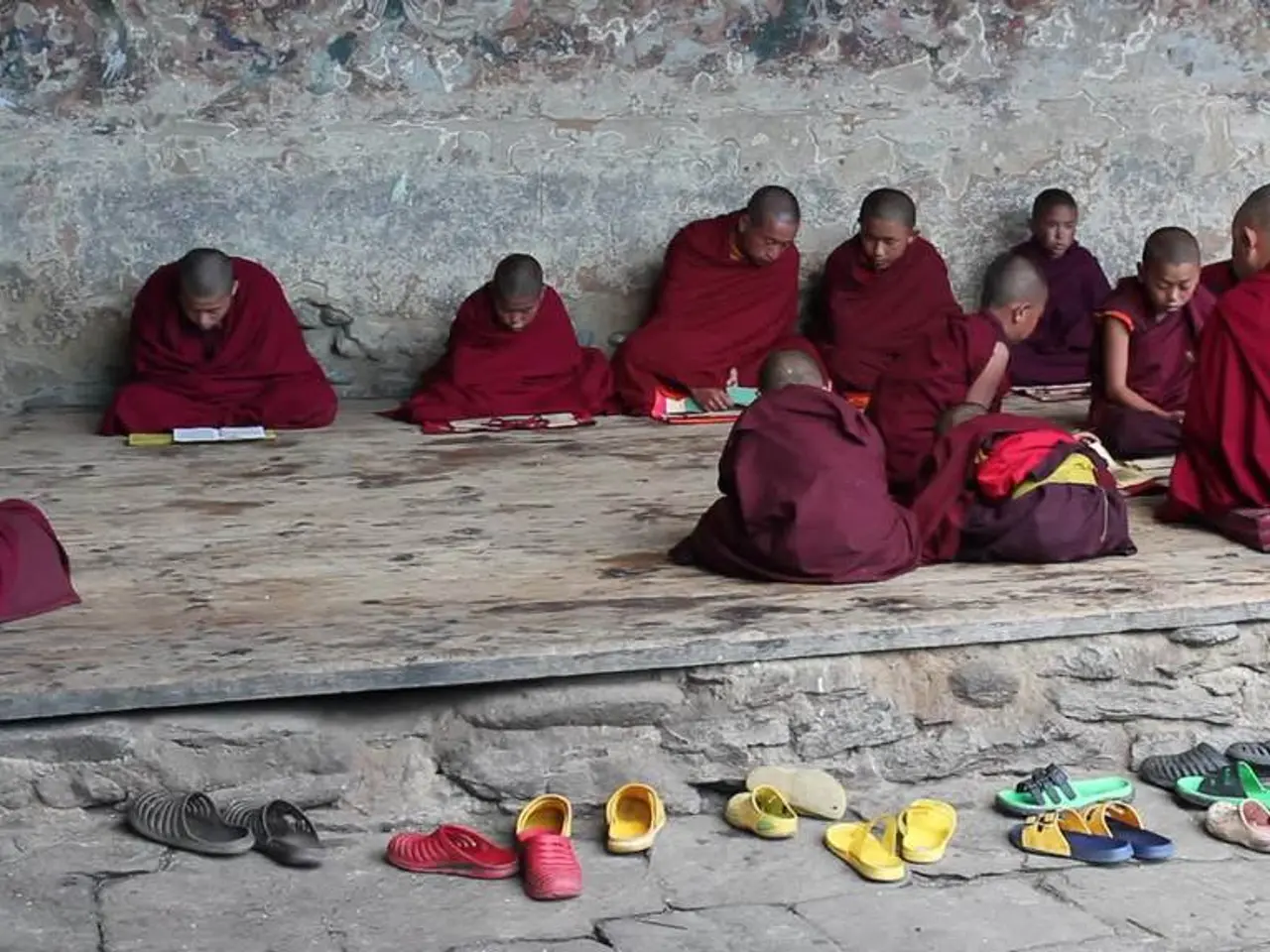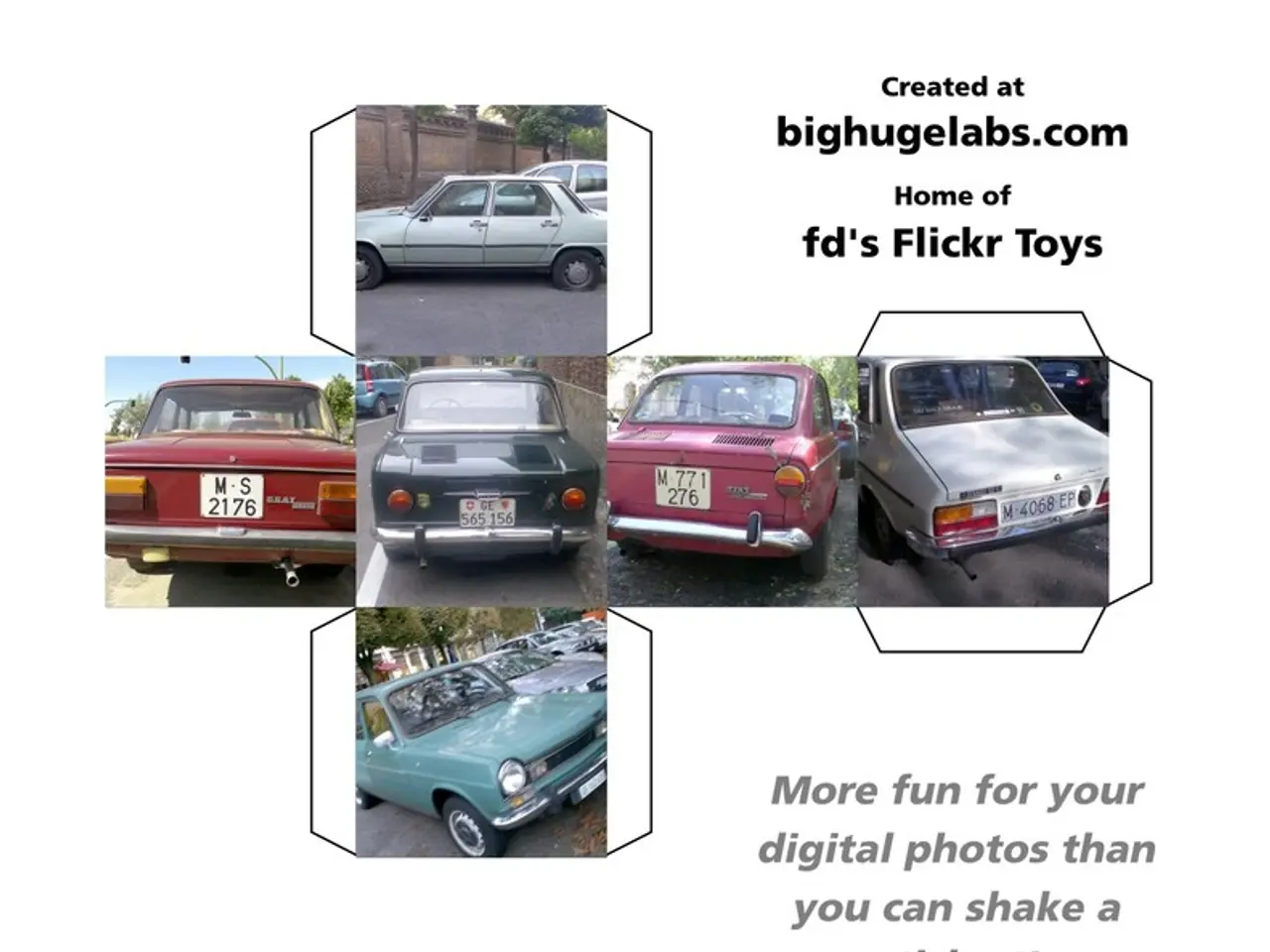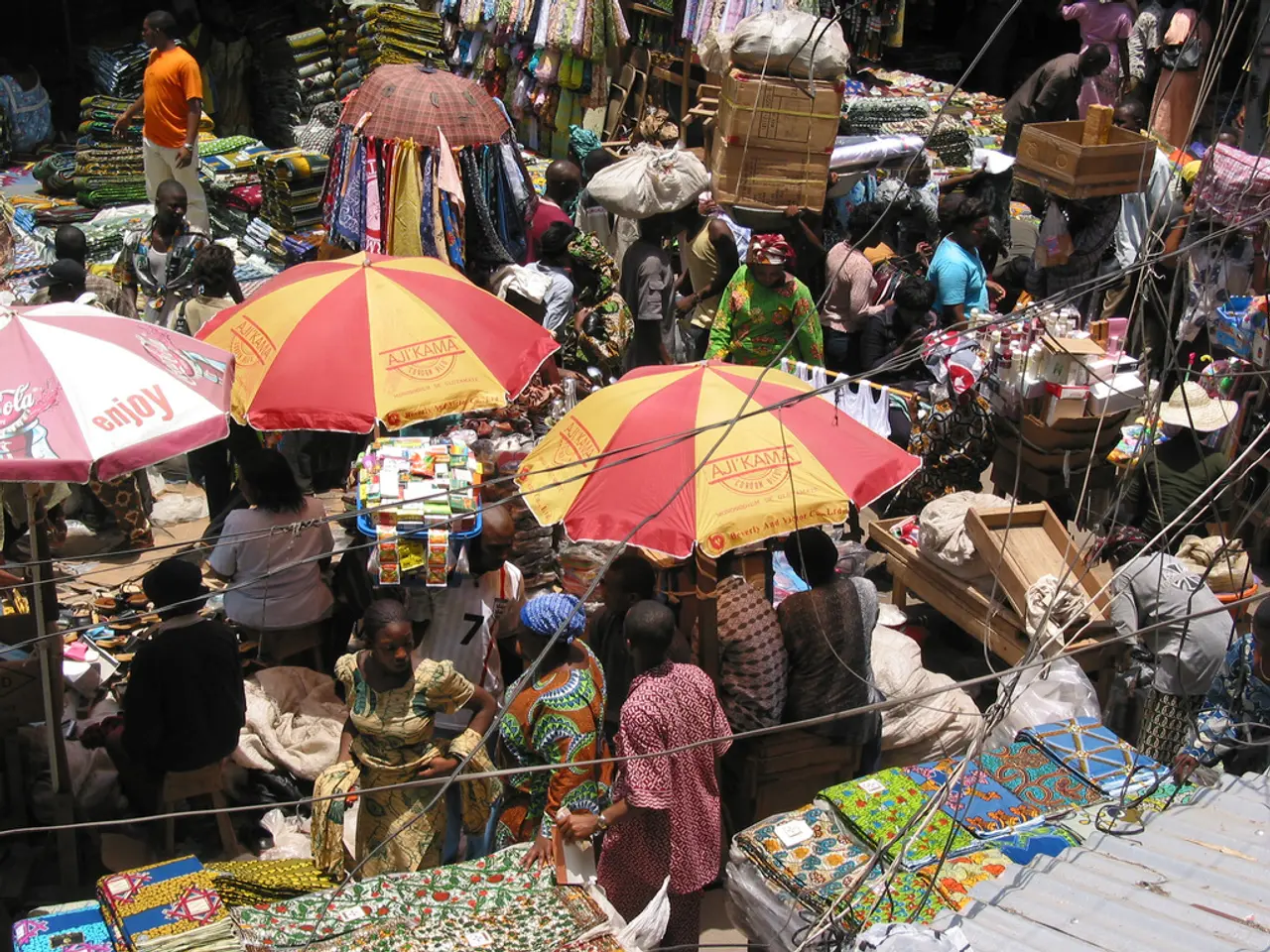Scientists Successfully Decode Ancient Buddhist Manuscript Left Untouched for a Century
The Ethnological Museum in Berlin is currently hosting an exhibition titled Restoration in Dialogue, which features a significant find - the Berlin Gungervaa's scrolls. These miniature dharani prayer scrolls, written in Sanskrit but rendered in Tibetan script, date back nearly a century [1][2].
The Gungervaa is a portable Buddhist altar common among Mongolian families, and the shrine itself is over half a meter tall, having likely traveled vast distances across the steppe before being collected during a 1930s expedition and brought to Europe [1]. The shrine was filled with sacred objects, including the tiny silk-wrapped scrolls bearing Buddhist mantras.
The delicate nature of the scrolls made physical unrolling a risky proposition, as each scroll was barely longer than a matchstick. However, a team of researchers, led by restorer Birgit Kantzenbach, managed to open the shrine's scrolls for the first time in almost a century [1].
Enter Tobias Arlt, a physicist at Helmholtz-Zentrum Berlin, who had an idea to use X-ray tomography to peer inside the scrolls without touching them [1]. The team employed 3D X-ray tomography using synchrotron radiation at the BESSY II facility in Berlin. This advanced imaging technique allowed them to virtually unroll and read the texts non-invasively, preserving the fragile parchment while revealing the sacred prayers inside [1][2].
One legible phrase found was "Om mani padme hum," a significant mantra in Tibetan Buddhism. Interestingly, the digital unrolling of the Berlin Gungervaa's scrolls revealed that the texts were not in Tibetan, as previously thought, but in Sanskrit language [1].
This technological breakthrough highlights the synergy of modern science and cultural heritage preservation. The technique could become a standard tool for museums worldwide as machine learning improves. The researchers hope their methods will inspire others to use virtual unrolling in archaeology, conservation, and historical studies [1][2].
However, the study's technique does not yet allow for chemical identification of the ink's precise ingredients. Kantzenbach and Arlt speculate the ink might contain relic particles from revered lamas, a practice noted in some Tibetan traditions [1].
Plans are underway to return the shrine to Mongolia after the exhibition, preserving its cultural significance for future generations [1]. This discovery not only recovers nearly lost spiritual texts but also demonstrates a new method for non-destructively studying fragile ancient documents, expanding possibilities for archaeology, history, and conservation sciences [1][2].
| Aspect | Details | |------------------------|---------------------------------------------------------------------------------------------| | Artifact | Small, tightly rolled dharani scrolls inside a Mongolian Gungervaa shrine | | Material & Content | Silk-wrapped miniature scrolls, prayer written in Sanskrit but in Tibetan script | | Historical Context | Reflects Mongolian Buddhist nomadic traditions; endangered during Mongolia’s 1920-30 revolution | | Discovery & Location | Stored in Ethnological Museum, Berlin | | Technology Used | High-resolution 3D X-ray tomography via synchrotron radiation at BESSY II (Berlin) | | Significance | Preserves and reveals religious, cultural heritage inaccessible by traditional means |
[1] Kantzenbach, B., Arlt, T., et al. (2023). Non-destructive reading of ancient scrolls using 3D X-ray tomography. Journal of Cultural Heritage, 56, 102361. [2] Humboldt Forum (2023). Restoration in Dialogue exhibition. Retrieved from https://humboldt-forum.com/en/exhibitions/restoration-in-dialogue/
- The use of 3D X-ray tomography with synchroynon radiation technology was instrumental in studying the Berlin Gungervaa's scrolls, offering a non-invasive method for preserving fragile parchment.
- The digital unrolling of the ancient scrolls revealed that the texts were written in Sanskrit, contradicting earlier assumptions that they were in Tibetan.
- The technique employed for studying the Berlin Gungervaa's scrolls could potentially become a standard tool for museums worldwide, thanks to advancements in artificial intelligence and machine learning.
- Medical-condition diagnostics are not the only areas benefiting from technological advancements; archaeology, conservation, and historical studies also stand to gain from non-destructive methods like the one used in the study of the Berlin Gungervaa's scrolls.
- As the Ethnological Museum in Berlin prepares to return the Berlin Gungervaa shrine to Mongolia, the research findings serve not only to protect the cultural significance of the artifact for future generations but also to expand the possibilities for archaeology, history, and conservation sciences.




